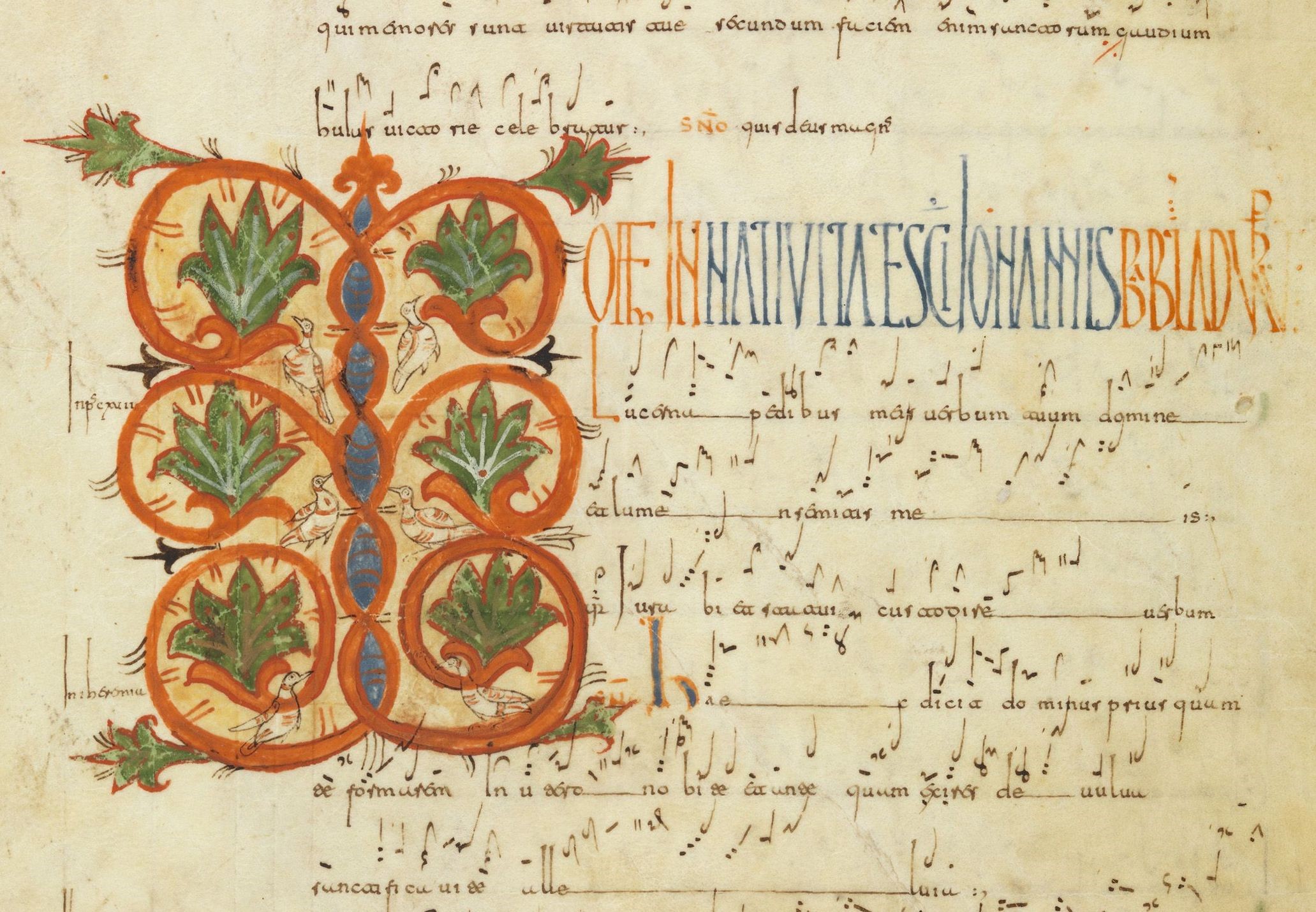
In the Iberian Peninsula and Southern France the Mozarabic rite, with its own tradition of chant, was dominant from the sixth until the eleventh century. Most of these chants were only preserved in so called “neumatic” notation, which indicates the melodic contours but not the exact intervals or pitches. The image above is taken from the early tenth-century León antiphoner (E-L 8, 211v) and shows the beginning of the Office for St. John the Baptist with chant in neumatic notation. Though the precise melodies appear to be lost forever it is possible to use machine learning methods to produce plausible melodies.
A new approach to this problem has been published in an article entitled “Generation of Melodies for the Lost Chant of the Mozarabic Rite” by Darrell Conklin (Ikerbasque Research Professor) and Geert Maessen (Director of Gregoriana Amsterdam). In this work, chants from the León antiphoner were encoded into contour sequences with marked repeated patterns. Melodies compatible with the contours and repetition structure were generated using a statistical model learned from later pitch-readable Gregorian chants.
A concert of ten generated chants was performed at a music festival in the Netherlands in June 2019. The concert chant “Haec dicit Dominus priusquam” (beginning at the third line from the bottom in the image above) can be heard and seen at: https://youtu.be/AXfZs26ji2U
The León antiphoner at the Biblioteca Virtual del Patrimonio Bibliográfico: https://bvpb.mcu.es/es/consulta/registro.do?id=449895
For further information: https://www.mdpi.com/2076-3417/9/20/4285
.png)
